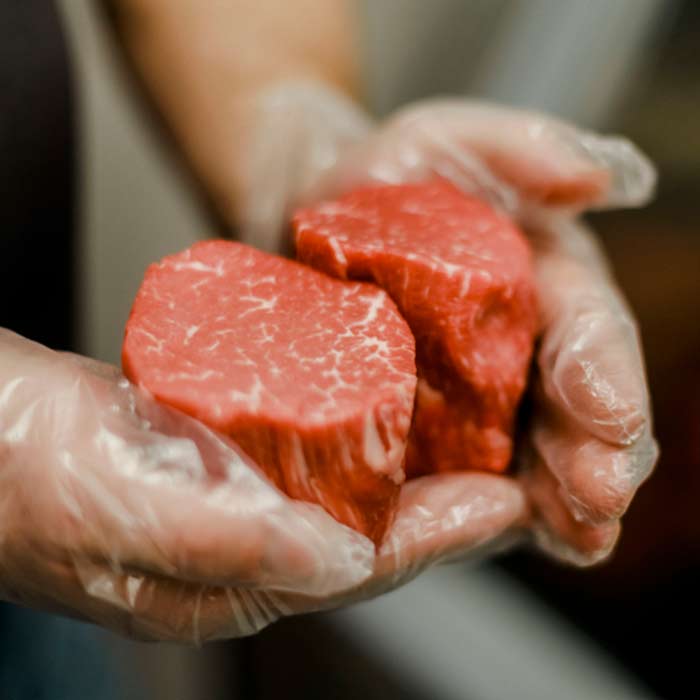Bagley Farms Meat Market Edwardsville IL: Your Go-To Location for Local Meat Selection
Bagley Farms Meat Market Edwardsville IL: Your Go-To Location for Local Meat Selection
Blog Article
Uncover the Art of the Butcher's Cut in a Modern Meat Market
In the ever-evolving landscape of modern-day meat markets, the butcher's cut has actually transcended its conventional roots, combining old-time craftsmanship with contemporary practices. What truly sets the modern butcher apart is their ability to create a much deeper connection in between consumers and the beginnings of their meat.
Development of Butchery Techniques

The mid-20th century saw butchery strategies further improved by clinical insights into muscle biology and meat aging, boosting both inflammation and preference. Advancements like vacuum cleaner packaging and refrigeration extended item shelf-life, enabling butchers to diversify offerings and improve quality assurance. This duration likewise marked the surge of specific equipment, such as band saws and meat slicers, which raised precision and efficiency in meat handling.
Electronic systems currently aid in monitoring animal provenance and maximizing cuts to satisfy details client choices. Additionally, a rebirth in artisanal butchery has arised, blending typical skills with contemporary knowledge to provide to customers seeking moral and sustainable meat alternatives.

Understanding Meat Cuts

Comprehending the complexities of meat cuts is essential for both butchers and customers seeking top quality and value. For butchers, specific cuts show skill and regard for the craft, ensuring marginal waste and optimal return.
The key classifications of meat cuts consist of primal, sub-primal, and retail cuts. Butchers then damage these down further into sub-primal cuts, prior to finally creating retail cuts readily available to consumers, like ribeye or tenderloin.
Comprehending muscular tissue composition is vital; muscles utilized extra frequently by the animal have a tendency to be harder and are best suited for slow cooking approaches, while less-used muscular tissues, like those found in the loin, are much more tender and perfect for cooking or roasting. Familiarity with these distinctions equips customers to make enlightened choices, enhancing their culinary undertakings.
Picking Top Quality Meat
Selecting the right meat entails more than try these out just selecting an aesthetically appealing item from the screen. The art of selecting top quality meat needs a discerning eye and knowledge of certain qualities that signify quality and excellence.
Secondly, consider the marbling, which describes the white flecks of fat within the muscular tissue. Appropriate marbling is a key sign of tenderness and taste, as it melts during food preparation, improving the meat's juiciness. Remember, higher marbling frequently associates with superior top quality cuts, such as USDA Prime.
Structure is an additional vital factor; meat must feel strong to the touch, not slimy additional hints or extremely soft. Additionally, bear in mind the scent. Fresh meat needs to have a clean, neutral scent, without any sour or off-putting smells.
Matching Cuts With Food Preparation Techniques
Effectively coupling cuts of meat with the ideal food preparation methods is vital for accomplishing ideal taste and structure. These approaches boost the meat's all-natural tastes and make sure a juicy coating.
Alternatively, harder cuts like brisket and chuck roast are abundant in collagen, which damages down right into gelatin when cooked slowly. These cuts are perfect for braising or sluggish roasting, enabling the meat to tenderize over time and develop deep, complex tastes. Cuts such as short ribs and pork shoulder fare click this link well with slow-cooking methods, where expanded cooking times change their robust textures right into delicious meals.
Lamb shanks and oxtail, which need prolonged food preparation to soften, are excellent prospects for stewing or slow simmering. These methods coax out abundant, hearty flavors while maintaining dampness. By recognizing the special qualities of each cut, chefs and home chefs alike can boost their culinary creations, guaranteeing each dish is both pleasing and unforgettable.
The Butcher's Role Today
Browsing the developing landscape of the modern-day meat market, the butcher's role today expands beyond simple prep work of cuts. Contemporary butchers are culinary craftsmens, instructors, and advocates for lasting techniques.
In addition to crafting specific cuts, butchers now engage straight with consumers, providing cooking suggestions and tailoring choices to match individual requirements and choices. Their experience in meat aging, marbling, and taste profiles encourages consumers to make enlightened decisions, enhancing their cooking experiences. This tailored service exemplifies the butcher's progressing function as a trusted consultant in the cooking area.
Furthermore, butchers are essential in decreasing waste, utilizing whole animals to produce varied items such as sausages and supplies - bagley farms meat market edwardsville il. This thorough approach not only respects the animal however likewise lines up with modern sustainability objectives. In this means, the modern-day butcher embodies both tradition and advancement, adjusting to an ever-changing market while protecting the virtuosity and honesty of their craft

Final Thought
Mastery in recognizing varied meat cuts and high quality indications empowers butchers to supply informed suggestions, straightening specific cuts with ideal food preparation methods. By honoring historic techniques while embracing modern demands, the butcher's function continues to be vital in today's advanced meat market.
Report this page